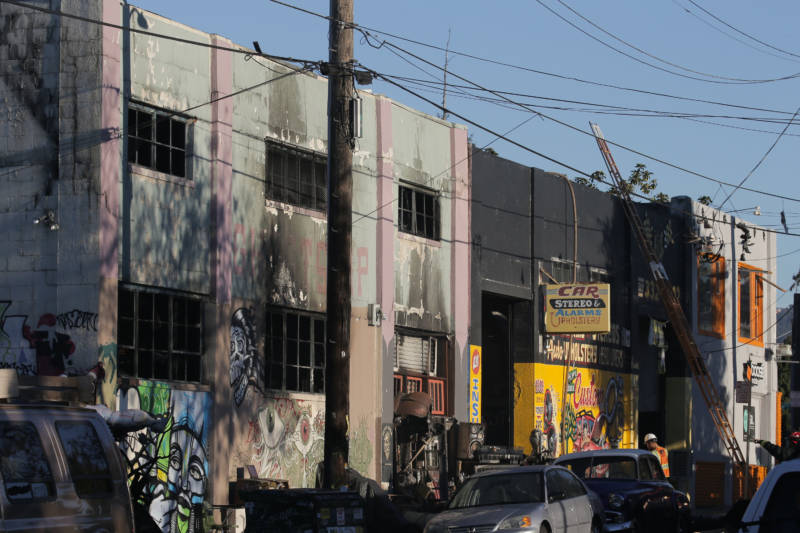A veteran Oakland fire investigator on Tuesday described the methodical but ultimately inconclusive inquiry into the cause of the Dec. 2, 2016, Ghost Ship warehouse fire that killed 36 and cast doubt on the defense attorneys' claim that it was a deliberate act of arson involving Molotov cocktail-like devices.
Ghost Ship Trial: Fire Investigator Casts Doubt on Defense's Arson Theory

Although the cause of the fire was undetermined, Oakland Fire Department investigator Maria Sabatini said investigators found no evidence of arson. Her team found no remnants of the glass shards or wicks associated with Molotov cocktails, which the defense has suggested were used to start the fire, nor did her team hear any witness accounts of the sound of breaking glass.
Jurors in the criminal trial were shown pictures of charred debris inside the Fruitvale warehouse, as Sabatini recounted how her multiagency team sifted through the wreckage by hand in search of evidence, such as burn patterns and accelerants, of the blaze's ignition.
Investigators concluded the fire started near a kitchen area with two refrigerators and a toaster oven.
Prosecutors allege master tenant Derick Almena built and operated the un-permitted residence and music venue with a willful disregard for safety, enlisting co-defendant Max Harris as his subordinate or second-in-command. Each of the men faces 36 counts of involuntary manslaughter.
Sabatini's testimony, which is subject to cross-examination Wednesday, potentially rebuffs what has emerged as an important part of Harris and Almena's defense: That the fire was not due to the co-defendants' actions or neglect, but due to a deliberate act of arson. The defense has also sought to shift blame to the landlord and many government officials who visited the warehouse without flagging unsafe conditions.
Defense attorneys Tony Serra and Curtis Briggs have said witnesses saw seven to 10 Latino men in dark clothing leave the building moments after the fire started, and that one of the witnesses then overheard people nearby boasting about leaving obstructions within the warehouse. They've also said witnesses will testify to hearing "popping" or breaking glass, indicative of the use of a Molotov cocktail.
Sabatini said it was the "most complex" investigation of her career, involving a collapsed ceiling and the recovery of bodies that had fallen from the second to first floor. Due to the suspected number of bodies, initially estimated to be as many as 100, and debris dense enough to prohibit moving through the interior of the building, the process was a "tremendous challenge," Sabatini said. "We couldn't see the floor."
Questioned by Alameda County Assistant District Attorney Casey Bates, Sabatini said the rapid spread of the fire resulted from the interior "fuel load," referring to the maze of trailers, partitions and wooden furniture inside the Ghost Ship. She said art supplies such as paint thinner and gasoline, stored within recreational vehicles used as bedrooms and studios, also likely intensified the deadly conflagration.
During Sabatini's testimony, the prosecution projected photographs of the warehouse's interior taken during the investigation. The mounds of debris gradually grew smaller over time, as investigators hauled materials away in 5-gallon buckets. One of the photos depicted scorched appliances in an area where Sabatini said three witnesses independently reported to investigators first seeing flames.
During a preliminary hearing in December, Sabatini said she suspected the cause was electrical failure, but under cross-examination said she could not rule out an open flame or arson as possible causes of the fire. An earlier report by her team left the cause as officially undetermined.
Sabatini's testimony will continue Wednesday, beginning with cross-examination by Harris' co-counsel, Andrew Stein, a Southern California attorney brought in to question the fire investigator.
